Apatite stone: deposits, properties and applications
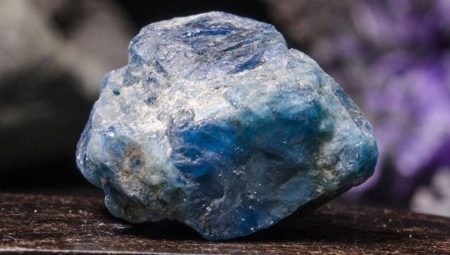
One of the most attractive and mysterious minerals is apatite. The name of the stone speaks for itself, as in translation from Latin it means "deception" or "riddle". Why is apatite so deceiving and what is its mystery? The fact is that this mineral contains a huge number of different substances, and their abundance makes apatite very similar to other groups of stones. It kind of disguises itself as other minerals, which is why it got its name. A person who is not particularly versed in stones is unlikely to understand from the first time that it is apatite in front of him. For example, inexperienced buyers often confuse this mineral with topaz or beryl.
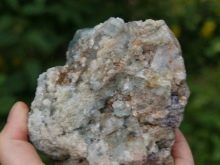
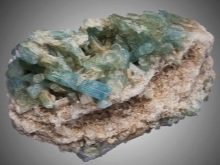
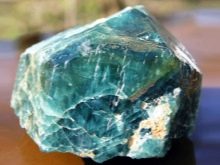
Description and history of origin
Apatite is one of the oldest minerals, but it was singled out as a separate group and characterized only in 1788. It is due to its extreme similarity with other groups of minerals that this mineral was “hidden” from mankind for a long time, only with the development of geology did apatite become an independent mineral and acquired its literally mysterious name. We can say that apatite lacks individuality, because it looks like other stones. But apatite is unique in its own way. It belongs to semiprecious stones, and the rather complex internal structure of the mineral allows it to acquire different shades depending on the lighting or viewing angle.
The purest and most transparent stones are highly prized by jewelers.
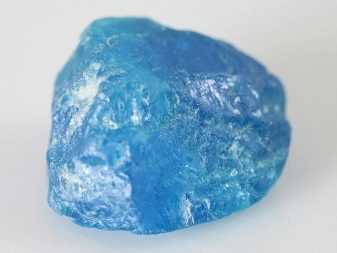

Place of Birth
Many countries are engaged in the extraction of apatite.Large deposits of this mineral are found in Russia, Canada, USA, Norway, Sri Lanka. It should be noted that apatite has its own individual color in each country. In Sri Lanka, stones are mined, which are used by jewelers, because in this country this mineral has a beautiful glass shade. The largest ever apatite has been found in Quebec, Canada. The weight of this mineral was about 5 tons. In Russia, there are mainly blue and blue types of stones. Canada is dominated by green and brown apatites.
In Norway, minerals similar to malachite are often found, they are aqua green, and a natural patterned pattern is visible inside. The largest Russian mineral deposit is located in the Murmansk region and it is called the Khibinskoye, since the Khibiny mountains are located nearby. By the way, there is also a town nearby, which is called Apatity. In addition, active production of apatite is carried out in Buryatia (Oshurkovskoye and Beloziminskoye deposits) and in Yakutia (Neryandzhinskoye and Ulkhan-Melenkinskoye deposits). The main deposits of minerals are found in rocks that have been formed since the eruptions of ancient volcanoes.


Large deposits are also found in Mexico and Brazil.
Properties
Apatite has a lot of characteristics, thanks to which it received the title of a semi-precious stone. It is necessary to distinguish several groups of properties - physical, chemical and medicinal. And the ancient traditions of ancestors and prevailing superstitions are pushing to single out another group of properties - magical.

According to their chemical properties, these minerals are usually divided into three main groups:
- hydroxyapatites;
- fluorapatites;
- chlorapatites.
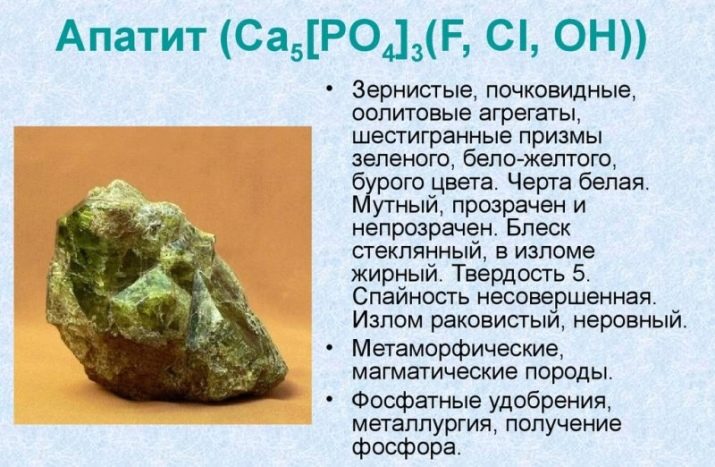
This separation depends on the chemical composition of the apatite. Chlorapatite, as the name suggests, contains chlorine, which gives these stones a white color with a glassy sheen. Fluorapatites are quite common and contain a large amount of fluorine. The color of such a stone can be varied. Hydroxoapatites are widely used in medicine and dentistry, since this substance is the basis in the mineral composition of bones and teeth.
The physical properties of the stone are also quite impressive. The density of such a fossil is 5–5.5 g / cm³, and the hardness is 3.2–3.4 on the Mohs scale. However, apatite is quite fragile and can crack easily. In addition, apatite occurs naturally in completely different, but very attractive forms. For example, prism-shaped or needle-shaped. This is an incredibly beautiful creation of nature.
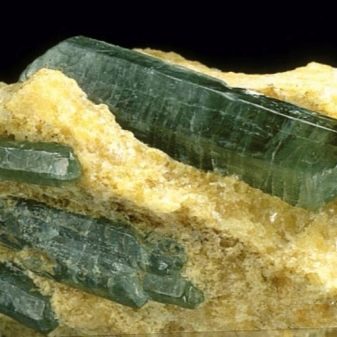
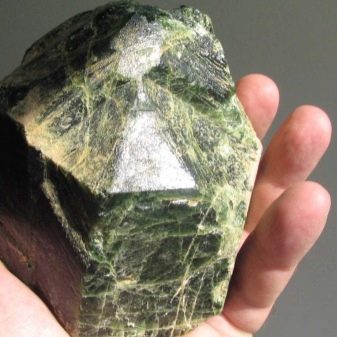
Since ancient times, apatite has been used for medicinal purposes, which continues to this day. In ancient times, it was believed that the owner of such a stone is protected from negative energy. That is, this mineral was used as a kind of amulet, bringing mental stability, bright thoughts and tranquility. Today apatite is used as a means of strengthening bones and tooth enamel. It saturates the body with calcium, helps with bruises and fractures... Some experts believe that this mineral has a beneficial effect on the thyroid gland and relieves stomach problems.
The magical properties of apatite were of great importance to our ancestors and were extremely popular in ancient times. It was believed that such a mineral is able to increase the level of the wearer's intuition and even inspire him with dreams in which one can see the future. It was also believed that this stone is able to warn the owner of the danger. This was reported by unpleasant sensations at the place where the apatite jewelry was worn.
Apatite jewelry possessed exceptionally light energy, therefore, it was very often used not only as a piece of jewelry, but also as a talisman of powerful power.
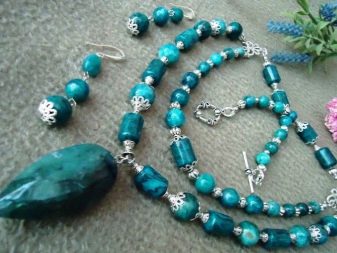
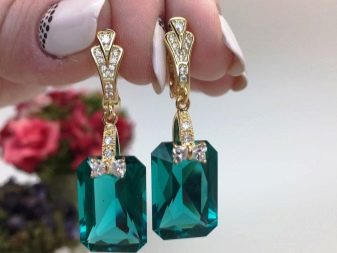
Varieties and colors
As mentioned above, the color of the stone depends on the chemical compounds that make up this mineral.The most common stones with high fluoride content come in a wide range of colors. Often there are yellow, pink and brown stones among them.
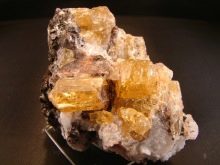
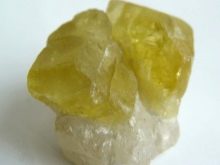

White, green and gray shades are given to the stone by the chlorine contained in it. The abundance of water gives the mineral blue, white and purple hues.
How to distinguish from a fake?
Today, counterfeits are found in many areas. And the jewelry business is the leader in the abundance of jewelry made from fake or artificial stones. Moreover, apatite is a chameleon stone, so it is difficult to distinguish it from any other stone. But fakes are often made of plastic or colored glass. It is not difficult to distinguish real apatite from such materials. The main rule is that each apatite is individual.
Absolutely similar stones from such a mineral simply cannot exist. Therefore, if there are several jewelry in the showcase, in which the stones are similar one to one, and the seller passes them off as natural apatites, then there is no need to even doubt that the stones are fake. It should also be said that apatite heats up very slowly and even less does not melt. Of course, you don't need to try to melt the jewelry to detect a fake. It is enough just to hold the stone in the palm of your hand. Plastic or glass will heat up immediately, and apatite will keep its temperature for a long time. And by weight, natural apatite is heavier than plastic or glass jewelry.
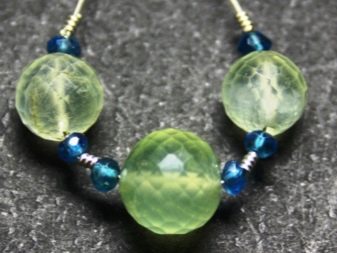
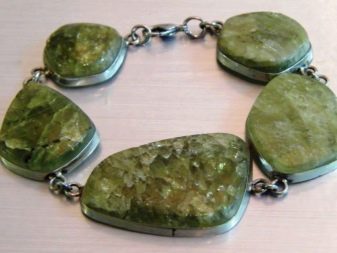
One more way can be noted on how to distinguish natural stone from glass fakes, but it is quite radical and they will definitely not be allowed to use it in the store. The fact is that when broken, the glass disintegrates into sharp and small fragments. But when apatite breaks, it breaks up into pieces without sharp edges. But resorting to this method, of course, is not advisable. After all, even if apatite turns out to be natural, then in a broken form it is unlikely to be suitable for further wear.
Who is it suitable for?
If the stone is selected depending on the sign of the zodiac, then professional astrologers highly discourage Pisces from wearing apatite jewelry. Such a stone does not suit them at all, but Gemini, Aries and Capricorns are extremely useful. Apatite also goes well with crystal or diamond jewelry.
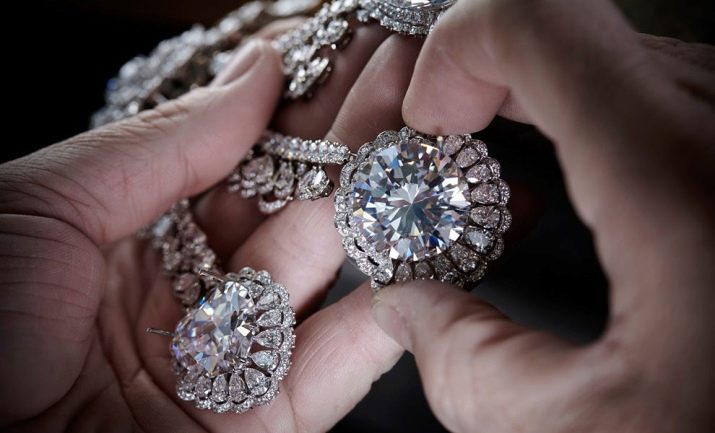
Apatite is perfect for people with nerve problems. These stones bring peace and tranquility.
The stone adjusts to a positive attitude in moments of despondency and sadness, therefore it will be extremely useful for people who find themselves in a difficult life situation.

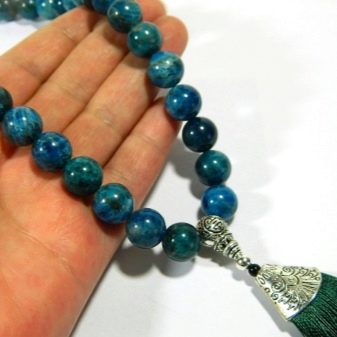
How is it used?
Apatite is used in manufacturing, jewelry and medicine.
In industry, these minerals are used for the production of natural fertilizers with a high phosphorus content or for the production of phosphoric acid. Also, this stone was widely used and used in metallurgy, and glass and ceramics are also produced from it.

Jewelers use pale or translucent stones in the production of jewelry. These minerals are quite fragile, therefore they are used for the production of jewelry much less than their more durable counterparts. This mineral is often used to make necklaces, cufflinks or earrings.
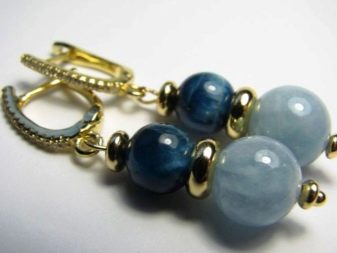
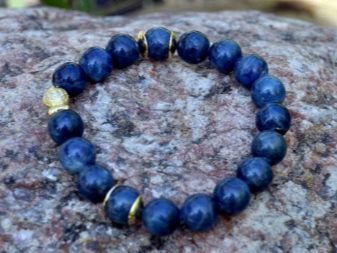
In medicine, apatite is valued not only for improving the psychological and emotional state, but also for its beneficial effect on teeth and bones.
In addition, there are attempts to make prostheses using apatite, close to the natural composition of human bone.
Care of stone products
As mentioned above, this stone is rather fragile, so it should be handled with particular care. In no case should accidental blows be allowed, otherwise the stone will simply crack. Do not allow the jewelry to interact with other chemicals, and it is highly discouraged to clean it with soapy solutions. From them, the decoration can noticeably fade. To wash away dirt or dust from the stone, you should use plain warm water and a soft cloth.Do not wear this jewelry too often, as it is prone to scratches and will lose its original appearance from daily wear.

Store apatite separately from other jewelry with sharp edges that can scratch it. Damage to the stone leads to the loss of its positive properties.
So, apatite today is the mineral that is used in many industries. The stone has a number of properties that have a positive effect on the health and emotional background of its owner. It should be noted that the cost of jewelry made from this mineral is extremely low and compares favorably with more expensive competitors. Apatite care is not at all difficult, the main thing is to choose the right natural stone, and not a fake, and handle it with care.
The story about apatite is in the next video.








